For gameplay evaluations on a 24" widescreen monitor, please head straight to our widescreen performance section.
We used the latest addition to the impressive Elder Scrolls series of titles, Elder Scrolls IV: Oblivion with the 1.1 patch applied. It uses the Gamebyro engine and features DirectX 9.0 shaders, the Havok physics engine and Bethesda use SpeedTree for rendering the trees. The world is made up of trees, stunning landscapes, lush grass and features High Dynamic Range (HDR) lighting and soft shadowing. If you want to learn more about The Elder Scrolls IV: Oblivion, we recommend giving our graphics and gameplay review a read.
The graphics options are hugely comprehensive, with four screens of options available for you to tweak to your heart's content. There is also the configuration file too, but we've kept things as simple as possible by leaving that in its out of the box state. For our testing, we did several manual run throughs to test the game in a variety of scenarios ranging from large amounts of draw distance, indoors and also large amounts of vegetation. Our vegetation run through is the result that we have shown, as it proved to be the most stressful - we walked up the hill to Kvach, where the first Oblivion gate is located.

 The Inno3D GeForce 7950 GT delivered an acceptable gaming experience in Oblivion, but there were better experiences delivered by some of the other cards tested. The higher clock speeds on the XFX GeForce 7950 GT 570M Extreme meant that we were able to increase both grass distance and shadow quality while all other settings remained the same.
The Inno3D GeForce 7950 GT delivered an acceptable gaming experience in Oblivion, but there were better experiences delivered by some of the other cards tested. The higher clock speeds on the XFX GeForce 7950 GT 570M Extreme meant that we were able to increase both grass distance and shadow quality while all other settings remained the same.
Add that to the fact that both the Radeon X1900XT 256MB and Radeon X1900XT 512MB cards were both capable of smooth gameplay with similar quality settings to the XFX GeForce 7950 GT 570M Extreme, along with the added benefit of 2xAA being enabled in conjunction with HDR. It probably doesn’t need saying these days, but if you’re remotely familiar with graphics technology, you’ll know that it’s not possible to do HDR and anti-aliasing at the same time on GeForce 7-series hardware.
Inno3D’s card does deliver a better experience than both the BFG Tech GeForce 7900 GT OC and the Sapphire Radeon X1950 Pro. Ultimately though, it doesn’t perform as well as ATI’s Radeon X1900XT 256MB – a card that’s around £30 cheaper than the Inno3D GeForce 7950 GT.
The Elder Scrolls IV: Oblivion
Publisher: 2K GamesWe used the latest addition to the impressive Elder Scrolls series of titles, Elder Scrolls IV: Oblivion with the 1.1 patch applied. It uses the Gamebyro engine and features DirectX 9.0 shaders, the Havok physics engine and Bethesda use SpeedTree for rendering the trees. The world is made up of trees, stunning landscapes, lush grass and features High Dynamic Range (HDR) lighting and soft shadowing. If you want to learn more about The Elder Scrolls IV: Oblivion, we recommend giving our graphics and gameplay review a read.
The graphics options are hugely comprehensive, with four screens of options available for you to tweak to your heart's content. There is also the configuration file too, but we've kept things as simple as possible by leaving that in its out of the box state. For our testing, we did several manual run throughs to test the game in a variety of scenarios ranging from large amounts of draw distance, indoors and also large amounts of vegetation. Our vegetation run through is the result that we have shown, as it proved to be the most stressful - we walked up the hill to Kvach, where the first Oblivion gate is located.
________________________________________________________________________________


Add that to the fact that both the Radeon X1900XT 256MB and Radeon X1900XT 512MB cards were both capable of smooth gameplay with similar quality settings to the XFX GeForce 7950 GT 570M Extreme, along with the added benefit of 2xAA being enabled in conjunction with HDR. It probably doesn’t need saying these days, but if you’re remotely familiar with graphics technology, you’ll know that it’s not possible to do HDR and anti-aliasing at the same time on GeForce 7-series hardware.
Inno3D’s card does deliver a better experience than both the BFG Tech GeForce 7900 GT OC and the Sapphire Radeon X1950 Pro. Ultimately though, it doesn’t perform as well as ATI’s Radeon X1900XT 256MB – a card that’s around £30 cheaper than the Inno3D GeForce 7950 GT.

MSI MPG Velox 100R Chassis Review
October 14 2021 | 15:04


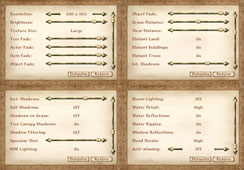
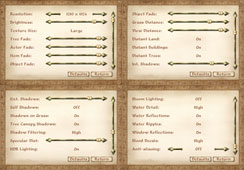
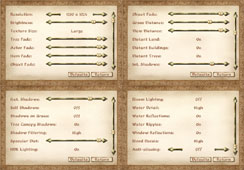
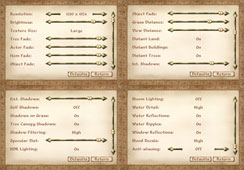
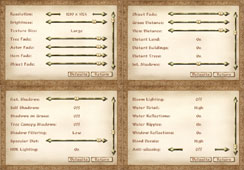
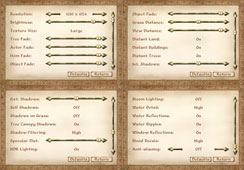






Want to comment? Please log in.